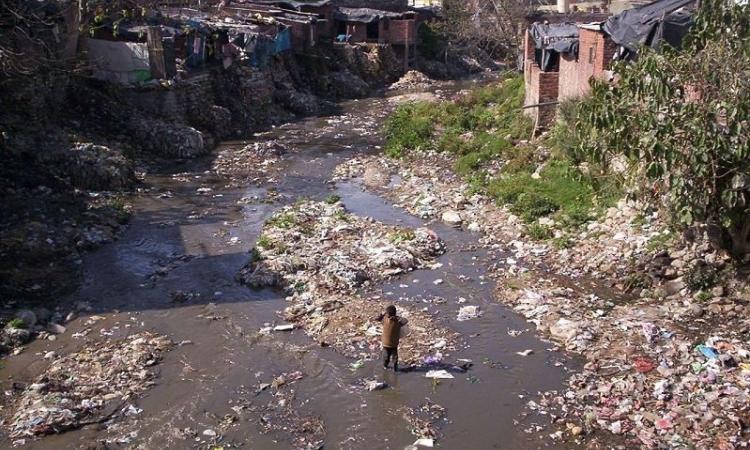
One characteristic of most Indian slums is their inadequate access to water, which has a serious impact on the health of its residents. Most of the research on water service delivery in slums until recently has focused on water quality and health outcomes, especially diarrhoeal illnesses. However, there are very few studies that address the relative importance of quality as compared to other water service indicators such as quantity, reliability, access or non-health related outcomes resulting from inadequate service delivery among slum populations.
The paper titled 'Multidimensional measurement of household water poverty in a Mumbai slum: Looking beyond water quality' published in the journal PLOS ONE, describes the findings of a study conducted in Kaula Bandar (KB), a slum in Mumbai, that aimed at measuring deficiencies in a broad array of water service delivery indicators and their adverse life impacts on the slum residents.
Data for the study was obtained from six focus group discussions and 40 individual qualitative interviews as well as a structured survey of 521 households in the slum to get quantitative information on water indicators such as quantity, access, price, reliability, and equity.
Kaula Bandar
Since Kaula Bandar slum is 'non-notified'--meaning not recognised by the city, state, or central governments--the community is denied legal access to most public services such as electricity, sanitation and water. Toilets at the household level are nonexistent while only a few pay-for-use toilet blocks are available. A large proportion of adults in the slum engage in open defecation. The slum reports high infant mortality, child undernutrition, and illiteracy rates as compared to most other slums in Mumbai.
Water supply in the slum
Two-thirds of households in the slum purchase water through an informal distribution system run by private vendors. They draw water from underground water pipes in the city by using motorised pumps to suck water into hoses that travel hundreds of meters to reach slum lanes. Residents pay on a monthly basis to access water from these hoses, that too for only two hours a day most of the time. Residents have to line up in the lanes at specific times to access a hose. The remainder of the households purchase water from taps located in other slums by paying the tap 'owners' (usually occupants of a nearby household) a specified amount to fill in containers that they roll from long distances to bring water to their houses.
Every few months, government officials raid and confiscate the motorised pumps. During these periods, all get water by rolling containers to fill them from taps outside the slum. Private tankers are also hired to bring water occasionally.
Findings of the study
- Water spending ate into a substantial portion of the household budget, compromising the money spent on food leading to residents taking out loans.
- Problems related to poor water access and reliability resulted in missed days of work or forced residents to leave jobs to fetch water.
- Poor water access and reliability also adversely affected women’s domestic labour such as childcare duties, and women expressed distress over the inability to complete daily chores such as washing clothes, cleaning dishes and cooking because of insufficient water quantity.
- Children were late for school or missed school due to water collection duties and these also compromised their time available for homework.
- Children and adults sometimes missed school or work as a result of embarrassment over body odour, due to lack of water availability for bathing.
- Residents complained of the connection between poor water quality and illness. Many residents also believed that inadequate water quantity lead to illnesses due to deterioration of hygiene in public spaces and home and, most crucially, public toilets, which also lacked water supplies.
- People who needed to fill water into containers by travelling long distances to access taps, esspecially the elderly, expressed concerns about the physical challenges of water collection. Some described spending the whole night collecting water. Those who received water from pipes also faced a lot of inconvinience because of the unpredictable nature of water supply, which sometimes arrived in the middle of the night.
- With regard to social relationships, residents described how relatives visiting from rural villages returned early due to lack of water.
- People complained that they often got into conflicts with neighbors while rolling water drums through shared lanes, and festivals often turned into crises because of lack of water.
- Residents said that they resented water vendors, as they often manipulated prices, and government officials as well, who they complained periodically raided vendors’ motors and shut down the water supply.
- Service delivery failures and lack of provision of formal water supply by the government led to cynicism among the people about the democratic process and compromised the residents’ sense of belonging and political inclusion in the life of the larger metropolis.
Water service delivery failures not only had a negative impact on household economy, but even employment, education, health, quality of life, social relationships, community cohesion, and people’s sense of political inclusion.
Quantitative data revealed that the price of water was strongly associated with use of inadequate water quantity. Water service delivery failures and their adverse impacts varied based on whether households fetched water or had informal water vendors delivering it to their homes.
The paper ends by arguing that failure to evaluate non-health outcomes may underestimate the high proportion of deprivation resulting from inadequate water service delivery among people in slums. It also outlines a multidimensional definition of household “water poverty” that it argues would encourage policymakers and researchers to look beyond evaluating water service delivery inadequacies in the context of water quality and health.
Please download a copy of the paper below.
/articles/water-poverty-mumbai-slum